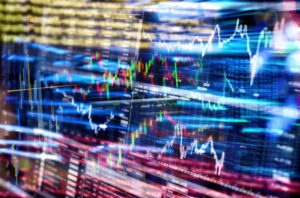VIX 46?! (Part 2)
The comments below are an edited and abridged synopsis of an article by Sven Henrich
The liquidity-soaked markets keep going higher, because the Fed has dispersed sellers. Some permabulls, giddy that the Fed continues to bail them out, mock anyone with a contrarian view of the damage being done to society and the economy as a result of ever-widening wealth inequality and the mountains of debt piled on to pay for Wall Street rescues.

But as predictable as the mockery, so are the elements of market patterns that suggest another larger volatility spike may be coming our way, new highs notwithstanding.
Calling for a volatility spike is a notoriously difficult, especially in markets so driven by artificial liquidity. On January 6, when $VIX was trading at 14, Henrich made a call for the $VIX to hit 46, and he was labeled a permabear.
The compression pattern is clean, and it suggests another spike is coming. As with the January call, it may take a while and then happen suddenly, or it may not happen if the Fed continues to remain in control. Henrich can’t be certain if and when it happens, but he is certain of renewed cries for Fed help.
$VIX spike calls are notoriously difficult especially with regard to timing, as $VIX tends to base on the low end for weeks, especially with a Fed whose mission is to calm markets, but currently the market is bloated.
Some may celebrate new market highs in the face of catastrophic pain for millions. But the contrarian view is that it’s a tragedy for two reasons: one, none of the market gains are earned, they are a bailout based on multiple expansion, not fundamentally based; and two, in past recessions most people took some pain, many a lot of pain. Not this time.
What an insult to the many millions that have lost their jobs and are struggling to make ends meet. What an insult to see America’s rich again dancing to the Fed’s tune while society drifts apart with ever-wider wealth inequality.
We may want to pretend that all of this is consequence free. It’s not. All this debt, all these divergences and divisions are making society and the economy more fractured and therefore more unstable in the long run.
